|
Here is a summary of the trip and some of my favorite pictures along the way. In many ways I wasn't sure why I was going on this trip. Initially I had wanted to take my kids before their lives got too busy, but their lives got too busy, and so they couldn't come but I decided to go anyway. When I got there I realised what things were very important and special about this trip, for me and for others. MumbaiBecause a dear friend lives in Mumbai, I enjoy having Mumbai be my point of entry into the country. There is nothing like seeing Mumbai with a Mumbaikar, you quickly get a sense of how to navigate those busy and uneven streets and see perhaps things that just aren't on the regular tourist route.....though it is always nice to visit a few of those too. LonavalaHowever when I first arrived in Mumbai there was a break in the monsoon, that had just started and so it was incredibly hot. So my friend and I escaped to the hills, the Western Ghats just outside of Mumbai. There the rain was regular, though not as forocious as it gets later on. Here life is simply and slow and nature does sings making you so aware of the rich abundance of invisible and visible goodness that surrounds us. RanchiI truly love staying at the HRDC (Human Recource and Development Center) Guest House. Primarily because the staff are so delightful and I can just sit in the lobby and meet the most interesting people. I did very briefly go to the "Theologica" or the Gossner Theological College (GTC) and to the GELC (Gossner Evangelical Lutheran Church of Chota Nagpur and Assam). I enjoyed speaking to the staff of the "Gharbandhu" which is the regions oldest newspaper, a hindu publication for the church. We spoke about how I can share pictures and short stories that they can translate and publish. Just before I left, I thought it would be a good idea to print out a copy of the translation work that my father has done of two histories written in old German by two of my great great grandfathers: Ferdinand Hahn and Ludwig Nottrott. [Note as far as we know Ludwig never came to India, but he wrote down this history based on the information sent to him by his brother, Alfred Nottrott who was a co-worker with Ferdinand Hahn. Ferdinand's oldest daughter, Louise, and Ludwig's oldest son, Karl W, married and are my great great grandparents] When I was having this work translated for my own research, I realized how valuable this history would be for the Adivasi people of Chota Nagpur. This may be one of the only and oldest histories. Why it was never translated earlier and put into their hands I do not know. it was most significant that I brought to them these vital histories for them and have asked both the GEL: and the NWGEL to publish these works, and translate them into Hindi. So that more people will know their history. I did not know how well received this gift that I left with the two seminarys would be. It is such a joy for people to have in their own hands one of the most important versions of their own history for the first time. Malar / Lohardaga / ChattiThe last couple of times I spent a lot of time with the GELC and the GTC, staying in Ranchi and traveling out to various outposts such as Purulia, Chaibassa, Jhamshedpur, and Lohardaga. There are still many other places that I would love to see, but I have a feeling I have a long history here and will be returning and have other options to see other places of this 2nd largest Lutheran church in India. For those who don't know there has been a split since the 1970s in the church so currently there is the GELC and the NWGELC, they have a common history and many other things in common, however, they both also have some unique differences. In any case, I had not spent much time at the NWGELC Navin Doman Theological seminary in Malar. So this time I spent half my time there. I was asked to share part of the history that I have learned with them and gave two lectures that I have now shared in this blog (6 parts). Malar is out on the edge of Ranchi in the country alongside a forest that is shared by three Adivasi villages. Again it is very peaceful there. My hosts are recognized as advocates for the community, and people come to them from the village about advise. Once again the students are often singing, dancing and drumming. On Sunday we went to church in Lohardaga, where Ferdinand and Doris lived for over twenty years. (1878-1900). The elders and the youth were very interested to learn from me more about their history. They asked me some great questions and I was really appreciative to learn what parts of the biography I am writing of Ferdinand are important to them. On the way back from Lohardaga to Malar we stopped at a little church in Chatti that was built in 1883. I had mentioned the origins of this church in my lecture and now it was good to see that it was still standing, and perhaps little changed from those early days. There is a huge mango tree that looks as old as the church. I always wish that the trees could talk to tell us more of our histories. Delhi The time in Ranchi and Malar went by too quickly. I flew to Delhi truly dreading the weather and pollution there. For over a month they had very high temperatures and in addition to the worst pollution in the world they were having dust storms coming in from the dessert. But before I got there a little rain had fallen, enough to clear the skies. I've been very fortunate the last three times I've been in Delhi over the past five years that the days I have been there have been beautiful. But I had a very bad cold so I mostly spent time staying in my hotel room at the YWCA and recuperating. I just want to make a comment about the fact that I have been working on uploading pictures off my phone into my Google Folder and writing this blog. The whole time I was in India it would take ten times longer to do what I have accomplished today! I really appreciate the connectivity that I have in this country! And I appreciate why the answers coming from emails in India always seem to take longer. Pretty much the only thing I did while I was in Delhi was to visit Jawaharlal Nehru University (JNU) to visit some social scientists who have also been working on this history of the Adivasi. The campus is so beautiful, a jungle with nealguy deer wandering around and peacocks jumping from the trees and flying across the sky. It was a hot evening and I was weak from recovering, but I really enjoyed not only the campus but also the great conversation. I have been very encouraged that I should be able to publish in India. KalimpongThe tag on to the trip was a week long writing retreat that I took with my friend up in Kalimpong. Five years ago we began to go on these writing retreats and have chosen a different hill station each time. We were anticipating a lot of rain up in this northeastern West Bengal town just on the Sikkim boarder, but it only rained twice during the day the whole time we were there. We spent most of our time writing, but would always have an excursion out either into town or walk out into the hills. It was a beautiful place and I was able to do a lot of editing on my book. Where we stayed would have a beautiful view of the Kinchinjunga range, but we were lucky to get a faint outline through the clouds.
0 Comments
I am wrapping up the two lectures shared with the Navin Doman Seminary. This will be the final post, that I am entering on my final evening in India. ---------- Ferdinand Hahn in Lohardaga (and Suleman Khalko his coworker) would teach what Pastor Gossner used to teach, that you have to have Christ inside you, but you also have to serve, not just by evangelism, but also serving the sick and needy. So some of the people came to them and it was obvious that they had what is now called Hansen’s Disease or leprosy. At that time among the Adivasi it had no stigma to have leprosy, they weren’t thrown out of their homes. They were allowed to stay in the village. Everywhere else in India they were driven out of their family. Yet they came and said that when things are difficult, we feel bad that we are a burden to the family. So they asked the missionaries to help them. This would be about 1878-9. So missionaru Hahn wrote to the Leprosy Mission Society in Scotland, and when he went back to Europe he went to visit them. He wrote that we need to build a community for these people. That is how he built these houses in Lohardaga, very close to their bungalow. And everybody would worship together, the well and the sick together, with women on one side, men on the other, and in the back the people who had leprosy. They always considered that they were one community and so wanted to worship together.  The first time that Ferdinand Hahn ever saw anybody with leprosy, was on the trip coming to India and they had stopped in Colombo, Sri Lanka, and he saw a beggar woman on the side of the road, and he wondered what alienation this person is experiencing. He already wanted to make a haven of hope for these suffering souls. At around this time many of the Adivasi from Chotanagpur were being sent as laborers to the tea plantations (in Assam, Darjeeling, etc.). So in 1900 Ferdinand Hahn went to Assam to see about starting mission there. But while he was there one year the missionary in Purulia died and so he was recalled to go to Purulia because it was such a big institution by this time and there was no missionary there. (Picture) There he found 700 lepers living together in one community, the biggest in Asia. So from 1901-1910 he is in Purulia. And there, unlike Lohardaga, he is only working among the people with leprosy and as pastor of their church. (The Mission to Lepers required a missionary to run the institutions they funded). He had a very nice way of preaching and teaching. He would walk amongst the people like this, and say, Jesus died on the cross for us. Yes, yes! Is that all he did? Then they would all shout, oh, yes, yes, yes. He rose again from the dead. He saved us from sin. They would all loudly give the answers they knew. And if someone were quiet he would turn to them and say, what did Jesus do for you? And the person would stand up and say, Jesus healed me. Or, Jesus brought me here to this place, and now I have a family. It was a very nice time, because they loved these people so much. Yes, they would have to clean their sores, because at that time there was no cure. They created a self-sufficient community, they made their own furniture, they grew their own food. In Purulia Hahn had more access to the British people. And he would tell them stories about Lohardaga. They asked him to write this down. And perhaps if he had not gone to Purulia, he may not have written the Kurukh grammar. He also wrote articles for the Asiatic Society of Bengal. In Lohardaga he had been very busy, but he had been making a lot of notes, but those notes would never have been published. It was because the English who had encouraged him to write to get his knowledge published. And it was at this time also that he wrote for the Germans (in Germany) the history of the Adivasi that I brought here. My father translated it from the German to the English and I brought it here for you. Sometimes we are taken somewhere else, and it is a good thing, although we may not understand until afterwards why it is such a good thing that has happened to us when you are asked to go from the place where you are happy to another place. You may ask why should I go, I am happy here. He was happy in Lohardaga, why was he called to Assam, to Purulia? In Purulia he had time to write! In conclusion, I want to say a little about his family. Above right is a picture of the Hahn Family: These are all his children. Standing in the center behind the parent is Louise, my great grandmother, she was born in Ranchi. The brother, Theo, standing next to her and her sister Marie sitting on right of picture was born in Ranchi. All the rest were born in Lohardaga. Doris and Ferdinand had 13 children, one buried in Ranchi, and one is buried in Lohardaga. . Only one (rather short) time in their whole lives did they live together, able to take this picture. They wanted to keep their German culture, it was very important to them. And this is why they encouraged the cultural development of the people also, because they said that if culture is important to us, if our language is important to us, then it must be important to them also. But the reason they had not been able to live together was because the older children were in school in Germany while the younger children were being born in Lohardaga, so only this one time they were all together in Germany at one time.
When I was in Lohardaga they asked me, how many of the children became missionaries. Half of them did, they all did some kind of work in the church. Louise, the oldest was a missionary i n Chattisghar. Her father helped also start the leprosy asylum in Chandkhuri. Standing in the back was the oldest son, who was a doctor. He came to Purulia for one year and then went to Mexico as a missionary. Marie was here in Purulia as a missionary with her husband Paul Wagner. On the left seated is Frieda, she went to Africa to be a missionary. Gushie standing on the left was in Ranchi as a missionary, and came back between the wars (after WWI).She was married to Martin Prehn. The sons all went to Seminary in America. One son standing on the far right died a few years after this pucture.Behind him on the right this son became very bitter and fell away from the church. And he died in the war, WWI. Interestingly enough, he died on the same battlefield where my mother’s father was fighting on the American side. So on one side my mother’s father, and on the other side, my great uncle. This happens all the time in war. As in the Pakistan-India wars brothers are made to fight each other. It is always like this in war. Yes, only two were pastors.
Before launching into this next part of the 2 lectures I gave at Navin Doman Theological Seminary in Malar, near Ranchi, I just wanted to make a few comments.
Every time I have visited Jharkhand I've had the great pleasure to meet Bishop Nirmal Minz and his wife Parakleeta. Bishop Minz has been a long standing pillar in the Adivasi community. His wife was educated in Germany, and so despite her Parkinsons disease she has translated into Hindi a history that was written by Ferdinand Hahn in 1895 celebrating the fifty years of the Gossner Mission in Chota Nagpur. I look forward to seeing hee important work published along with the amazing photos. Most of the photos I use in my lecture come from that book. I do wish I had spent more time finding out what she has written about the organization of the church. Perhaps there is something more that can be added to what I said in this part of the lecture. Or perhaps there are some points of clarification that need to be made. In this portion of my lecture, but I wish to qualify that more research is needed in this area of church organization structure.
In case you want to read the previous Parts first before this part:
http://www.journeyfromjourneyto.com/writers-journey-blog/part-one-history-talk
http://www.journeyfromjourneyto.com/writers-journey-blog/part-2-history-talk
http://www.journeyfromjourneyto.com/writers-journey-blog/part-3-history-talk-chaibassa-to-lohardaga
http://www.journeyfromjourneyto.com/writers-journey-blog/part-4-history-talk-chatti
Let me break down this part of the lecture into different categories
1. The Missionary (Mission) and the church 2. civil responsibility 3. Catechists 4. Pastors 6 The Pnachayat. 7. annual conference ------------------------------------------------------------------ The histories written in old German, that my father recently translated into English, suggest that Christianity was spreading among the Adivasi, primarily through the people themselves. The missionaries had come and presented the Gospel message of Christ (see photo below left preaching at a Mela), but the people themselves spread the message into remote regions. Then the missionaries ensured that seekers would be well taught what being a christian means (again through the Adivasi Christians) before verifying genuine belief and carrying out baptising. Their work of oversight over the church from the beginning had an ultimate goal that the people themselves would govern themselves and be self sufficient.
Ferdinand Hahn was also concerned about the Civil governance of the people in the community at large (not only the Christians). He played an important role of setting up Lohardaga's Town Council and was elected it's first President. The organization of the council was president, secretary, treasurer, like typical German organization. I doubt many towns have such a structure. In the photo above right you can see in the picture that the municiple government was a representation of quite a diverse number of people who lived in Lohardaga in 1888.
he missionary lived on the mission compound. Christians tended to live in their own villages. On the mission compound (which was often given names like Bethsaida, or Ebenezer, or Patrasburg, etc) On the compound there were school buildings and most of the time a church. The only church for believers to attend for quite a distance. If Christians came to stay near or around the mission compound, but these mission sites, were not "settlements" or "colonies" like in so many other missions. In many places around India, converts to Christianity were rejected from their communities, and so the missionary would create for them a new Christian village. This was not the case among the Adivasi, who followed various faiths in addition to their traditional Sarna religion. They all coexisted together with moderate prejudice. (One cannot say it never existed, but it was more rare than common) From the beginning the missionaries trained catechists to teach the catechism (usually Luther's short catechism). In photo below left, the missionary is teaching the catechists. Then the catechist would go out to the villages and teach those who were seekers. A seeker had to study the catechism for at least six month to a year and a half. The missionary would quiz them on the genuiness of their belief and knowledge of the faith before baptising the people. But when the missionaries counted who was part of the church, they would include the seekers.
From 1871 on the missionary seminary ordained pastors, mostly Adivasi pastors. These pastors in some cases would move to an area where there was a concentration of Christians. In many cases they went to assist the missionary in managing the churches and schools. For those who moved to the villages there was at first a strain between the catechists who were considered spiritual leaders. So it was quickly decided that it would continue to be the catechists work to do evangelism, that is spreading the word and teaching about the faith. The pastors role was to take care of the congregations. If there were up to 12 christians in a village (including women and children) then that was a congregation. Where there were a concentration of Christians a church would be built (like in Chatti).
Pastors were given four years in the Seminary, and then they would do two years in the community, and then they were ordained. Then they were required to meet together in regions once a week, if they can, or at least once a month. In this way the pastors can share with each other, learn from each other how they meet the problems they have faced. Then the Pastors were required that once a year they should take a refresher course of 6-8 weeks. This would be at the time of the Annual Conference when everyone would gather in some place, sometimes Ranchi, sometimes Lohardaga, or different places. When this became so many people that would come and it was difficult to place them, they started having representatives to come, one for each 1,000 members. This did not have to be the Pastor or Catechist, but whoever the people wanted to be their representative from their congregation.. Often the pastors and the missionary had to figure out how to deal with matters of discipline. There was an emphasis that most culture practices were acceptable, unless something is specifically mentioned in the Bible. This included drunkenness, however they had a serious problem with alcoholism. Then the dancing in the circle, or akra, had elements of spirit worship, so they did not allow it as part of worship, but otherwise a cultural practice. They had a little bit of garbar over tattoos, because the Bible says no tattoos, But the people said that this is how we express our position in our community, so after a while it was allowed. Then the Christians started identifying themselves with crosses and other Christian symbols. But I do want to say something about alcoholism. There is the question of discipline in the church, this was another thing that they struggled with. Alcoholism was one of the bigger things that disturbed discipline, but there was also adultery, and things like that. But they had a policy not to expel anyone from the community. It was a very controversial policy, but they said that the reason that had to be done was for the community. They recognized that the person identifies so strongly with the community that expelling them from the community is like throwing them out of the world. The commitment of the church was to restore the person. If the person had any leadership role, they would lose that. Or if they came to church and they were drunk. They would be asked to leave. But they would assign two Catechists to that person, to pray with him, to teach him, etc. If any of you have studied about alcoholism, you know that the habit is very strong, and I think this method got lost because the person didn’t change. The alcoholism was stronger than his will to reform. So in the church, and even in America they are finding that this is a problem. And we find that the Twelve-Step Program is very good because it creates a community for those who are struggling with the same problem
The interesting thing is that when they go to the village level, the Panchayat is very important to each village, and in the villages where the Christians were in the majority, or all of the village was Christian, they would give authority also to the Panchayat to select representatives. So the missionary would always have to meet with the Panchayat first, then with the Pastor and the Catechist, and then with any others. It was for this reason that they had the Pastors do more and more of this work in the village. And I told you the story of Suleiman Khalko in Chatti. This was the kind of development they had, and it was because of this that when the missionaries left, they already had a system in place for self-government.
I was also telling the class about the financial support of the church. They placed all the offerings and the special offerings and put them into a fund, and the at would pay for half of the Pastor’s salary. Pastors were paid Rs.15 a year back then. and the Mission paid for the other half. By this they were trying to teach the congregations to raise all the money needed to run their congregation. But they were concerned, because when you have someone in the village who is being paid a salary, and the rest were working on their farms, this creates a difference in status. But if they didn’t do this (pay a salary) the Pastors would not have enough time (from their farm work) to do all the work, because they usually had several congregations. [the unordained missionary received 40 Rupees a month for himself, Rs.15 for his wife, and Rs. 8 for every child; the ordained missionary Rs.50, wife Rs.20, and child Rs.10, whereupon the former higher value of the rupee came to the aid of the missionaries; FH 1906] Because the Christians and the non-Christians lived together in the villages, and the missionaries had to make sure that there was peace. They had to respect the system (differences they had), For a brief time they got concerned about the sums not being properly managed. So they centralized the fund. But then the problem was that it was no longer a community based effort. Then the people started asking, where is my money, my gifts, going? But by the time the missionaries saw that this was a mistake, they were forced to leave (the country). The people were very generous, but they had a problem. The very first believers liked to give to the Church, because formerly, when they were non-Christians, they had to give to the village priests, and for the sacrifices, it was very expensive for them (but they had to give out of fear). So when they became Christians they were very happy to give. They would rather give to the Church than give sacrifices. The priests were constantly saying, oh, you are sick, you have to give a sacrifice, (and also collected a fee for himself). If you have a wedding, you have to give a sacrifice. Also during the harvest they had a tradition of always having to give. Actually, the new believers, not the missionaries, started the harvest celebration in the church. The missionaries were pleased to see this. The other problem was that when the church had become more established the missionaried wished to teach about tithes, you need to pay a fee for burial, or some other service by the church, then the people objected because they said that the Zamindars are also asking a fee for one thing and another. This is another example of how, if you lose the theological background (godly purpose), which is your thanksgiving offering, you tithe as an offering to the Lord in thanks for all His abundance to us. If you forget that, and it just becomes a fee, that makes it a problem. Some places, such as Takamar became self sufficient early because they had a way of setting aside a portion of rice at evey meal for the Church. After all how exactly do you measure 1/10th of your farm? What is one tenth of a goat or a cow? Let me not forget some unsung heroes of the Adivasi church. Bible women. The missionary wives noted that the true leaders of the home and clan were women. They would teacc, those who were intereste, bible stories. Eventialy through Zinana mission they recieved some literature. So they taught the women how to read. The women could then support themselves by selling the tracts for one anna. Some of the German missionaries were not very supportive of this ministry, but it was a way to educate the community about the faith. It was a way to engage the women in church leadership. Finally, there was an annual conference from 1874 on. As the numbers grew it became unrealostic for all believers to join in the gathering. So 2 representative for every 1000 believers were locally elected to represent the various congregations scattered in hundreds of villages. Minutes were taken in old German by a missionary of these meetings. If we could read them we would learn so much more about church organization and life. (much is available in Berlin archived, however in old German handwriting) It is because of this organization that the church was able to gain autonomy in 1919. As the leaders negotiated with the British government to remain Gossner Lutherans and not Anglican, the people were part of the process. Lines of communication and the ability to vote on such matters had been put in place. Different regions may have been organised slightly different based on local cilture, but all the people had input on these developments, so the British could not deny them Autonomy on July 10, 1919.  Comments This is the 4th part of the first of two lectures presented last week to the students and faculty of Navin Doman Seminary. i will be breaking it down into smaller parts, for some you may have seen some of this in a post before. but remember much of this is all basically new information to the listeners who were impacted by this story. .................... I have been sharing about Ferdinand Hahn, but I want to give you just one example of how the Adivasi pastors worked and how the churches multiplied during this time of the missionaries. Around 1871, when Ferdinand was running the boarding school, half the students left to go to the Anglican boarding school. So he had to go out to the villages to recruit more boys to come to the school to get an education. One time he entered a village and saw two boys taking care of the goats, and he asked them if they would like to go to school. They said that you have to ask our mother. Now the mother was a widow, so she said I can’t give you both my sons, but I will give you one son, Suleiman. When his mother brought him to tge school she told her son, you can run away any time you dont like this place. But Suleman liked it very much, even though the shoemaker missionary made him wesr shoes. He went to the Boarding School, then he went to the Seminary, but he had a problem with epilepsy. Even so he was passionate for Jesus, and he wanted to go back and work with the Oraon people. So Ferdinand suggested that he come and work with him in Lohardaga. Rev Suleiman Khalko started working with the Christians in different villages, and now in the village called Chatti there were 1,000 believers. Then he took the initiative to remember an old missionary that had been in Lohardaga many years ago, who now was in America, and wrote a letter asking for some money. When he got the money he built the Church in Chatti in 1883. He was only the pastor here a few years and then died. But his congregation loved him so much, when he became sick thet carried him on his bed all the way to Lohardaga in hopes for him to be healed. It was a good hour drive on the car! Not all the churches from the 19th century are still standing, but there are many scattered about chota Nagpur that never had a missionary stationed there, they were run from the beginning by an Adivasi pastor. ---------------------- I had the priviledge of seeing the old church in Chatti that is still being used ny 13 congtegations from surrounding villages. Appatently in Chatti itself thete are no more Christians, necause when the road came through, Adivasi dont like to live near the road, and oytsiders usually come and settle there. One could imagine that life in the church compound is still very much like those olden days. There was an old mango tree that seemed as old as the church. Comments This is the 2nd part of the first of two lectures presented last week to the students and faculty of Navin Doman Seminary. i will be breaking it down into smaller parts, for some you may have seen some of this in a post before. but remember much of this is all basically new information to the listeners who were impacted by this story. ................. In 1876 there was an epidemic in Chaibasa, Alfred Nottrot was very sick, his wife died, other missionaries and their children died. Doris and Ferdinand had to go to Chaibasa to help them. Ferdinand Hahn would sit with Alfred Notrott and they would talk Theology. Throughout Ferdinand Hahn’s life he always had a mentor. When he was a child, it was his Pastor. When he was at the Gossner Mission School there was a teacher named Prochnow who was like a mentor to him. And now he had the opportunity to sit with Alfred Nottrott, and even though Alfred was very sick, coming in and out of delirium, they conversed very deeply. That was one year, and Nottrott got better, then Ferdinand Hahn got very sick and almost died. When they both recovered the Mission said that Chaibasa is not a good place, for those who are weak from sickness. The climate was too hot. So Nottrott and his family were sent to Burju, to continue to work with the Munda. Ferdinand and his family went to Lohardaga, to work among the Oraon. Lohardaga had been a station before the Mutiny 1857, and it had been closed until a year before the Hahns went there This picture shows how they traveled from one place to another. The woman and children would travel in a palki, the man would travel on a horse, and many people would help with carrying the baggage. Between Ranchi and Chaibasa there was a good road, so a bullock cart could be used, but between Ranchi and Lohardaga, there was no road. So they had a system, they would take the baggage from one village to the next village, and from that village new carriers would be hired to carry to the next village. This was the cultural practice among the Adivasi. They were used to carrying big loads. This was a custom among many indigenous peoples across northern India. Unfortunately the British turned this self supporting system into an obligation for their benefit. If a Britisher was traveling, villager had to drop everything and do whatever they were ordered. They said this is your custom anyway, so now you have to do it! They did not realise that this was a way for communities to support each otjer and was never an obligation. So Ferdinand had to figure out how to navigate this new system, and become part of the society and not be considered to be acting like the British. So he joined in to the way of give and take. If one did something for someone, then the other would be willing to do something in return. He liked this sharing economy, and even though Europeans criticized it for being primitive, he recognised the value not only for Adivasi culture but for the church. He wanted to encourage the people in the Church also to share like this. Even though the Germans could not help but keep track of balanced accounts. That part of their culture they never abandoned.
Now let us go back to Ferdinand's time in Ranchi from 1868-1876. When he first arrived the job that he was given was to run the Boys Boarding School. He had hoped that he would at first be apprenticing with a senior missionary, but unfortunately they left the mission and went to the Anglican Church. So now he had to figure it all out on his own. One person who helped him along the way when he was the young Hanukh D. Lakra. Hanukh later became the first President of the autonomous GELC. When Hanukh was a boy he was the only one that had learned some German. The new missionaries didn’t know any Hindi, not even any English to be able to speak to the British, so it was good to have this youth helping them all the time The Mission made a commitment in 1871 to make sure that the Adivasi Church was independent. This was a principle that Gossner had emphasised, but the older missionaries had lost sight of that vision. There were some Indian pastors in the mission, but they were from places like Bengal, UP, different places. After almost 20 years there still were no Adivasi pastors. So in 1866 this big building was built for the purpose of training pastors in a Seminary. But in the beginning they only could use it for a school for Catechists, and as a girl’s school. 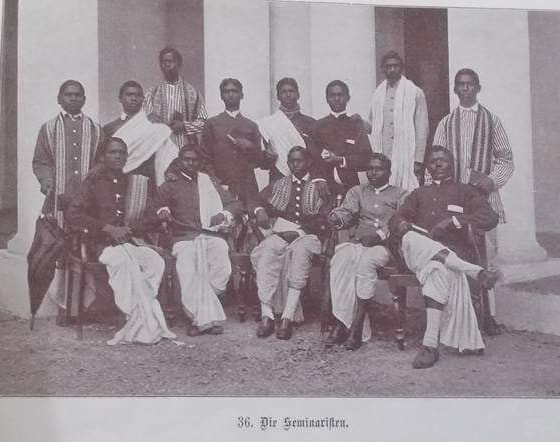 Among the Catechists they chose a few string leaders. One was a Munda named Nathanael Tuyu. They asked him to go to Ranchi for a two year program. He said, "why do you want me to go to Ranchi, I am doing God’s work right here. Why should I go away, am I not doing God’s work here? I am called me to do God’s work here." That was in the area of Chaibasa. So it was agreed that he would be given a fast track for only one year. Nathaniel Tuyu was so impacted by what he learned in Ranchi, that he encouraged others to seek this training and be better equipped in understanding the Bible and learning about church life. Ferdinand Hahn, who was not ordained, was asked to tutor Nathanael Tuyu to get through the program in a year. This is how Ferdinand’s life as a missionary started. He doesn’t know how to run a school, but he is told to run a school. He is not ordained, but he is told to ordain a pastor. That should give you some idea of his character that said, I can do, I can do. This is the picture of that Seminary, but today you cannot find it in Ranchi. It was next to Christ Church. Now all you can see is this wall, and these three pillars. The rest of the building was knocked down. The problem was that they didn’t do Seminary here in Ranchi, it was done in different citied, like Hazaribagh. They had trouble maintaining such a building after Autonomy. You can imagine it is very difficult in maintaining a building like this. They would place the Seminary where the Teachers were. The building was not properly used. When you go to Ranchi you have to imagine - 1868, 1871, 1880 when this building was there, there was no big city like there is today. There were only 26,000 people in Ranchi. Then there was only Christ Church and the Seminary building and a few smaller buildings around to be seen. So at that time it was standing out as being the place for God, that Christ is here, in the middle of - nowhere! It was like puttiing a light upon a mountain. I've been laying low, resting and writing, for past 2 days. Finally went out and well it is kind of like Miami, hot and humid and gratefully not that polluted. there hasnt been rain for a bit. The winds have cleared the air, now that they finally are no longer bringing sand with them from the desert. But still I went with a friend to the elitest hideaway to be cool and have safe food. Except for a few coughs i managed pretty well. Appears I am on the mend.
The Imperial has always been my little sweet place of escape in Delhi. It is so elegant, so peaceful, but so expensive (high even for American prices). But Ive never enjoyed a cucumber cheese sandwich so much, and my fav, fresh lime soda sweet. But this glorification of Imperial rule and the display of decedance, with someone wherever you turn to namaste you and meet your every need, is over the top for me. In the 70s it wasnt this constant show...it was a Greta Garbo kind of elegance: : "I vant to be alone." Any way, I got my Imperial stint in, now I am ready to go for coffee with a communist. That's India for you. In fact coffee with the commie IN the Imperial would just be the ticket. (Im sure that will ruffle a few American feathers...fyi I am joking) ...................... This is the first part of the the first of two lectures presented last week to the students and faculty of Navin Doman Seminary. i will be breaking it down into smaller parts, for some you may have seen some of this in a post before. but remember this is all basically new to those who wete impacted by this story the most. ...................... I’ve been studying this research for over 5 years. I have had the advantage of finding a lot of material online. .. and as I told you yesterday, it was the diary of my great great grandmother that sparked my interest in this story. It began as a search for a forgotten family story. We have had four generations of missionaries to India, my father being the fourth, but we knew nothing about the first generation. Many people in America are interested in their Ancestry story. America is made up of a people from all over the world. Millions of Americans have German ancestors, but mine have a unique ancestor story for they migrated from Germany to India before going to America. Doris and Ferdinand Hahn are my great great grand parents. Let me tell you how they met. Ferdinand was attending the Gossner Mission school in Berlin, and another student with him was Wilhelm Voss, who spoke often about his pietist family. He also spoke fondly of his younger sister. So on the day that they were being commissioned to go to India, Wilhelm’s parents and his sister came to wish him goodbye. Ferdinand immediately knew she was the one he wanted to marry. She was only 16, but he asked, Will you marry me? And she immediately replied, Yes! Her parents also immediately said yes! Because Doris also wanted to go to India to be a missionary. is it Dr Farabehn's wife In my research, I was frustrated to find that the contribitions of women were hardly ever mentiomed. So when I finish telling the story about Ferdinand I shall write a story about Doris, who inspired me. She did mamy things other than write a diary. Since she was only 16, it was decided that she should stay in Germany and apprentice to become a teacher, while Ferdinand settled in India. Doris came to India in 1871, they got married in Christ Church in Ranchi. [Note of intetest: 25 years later, their oldest daughter, my great grandmother, got married on the same day, 8 December, in the same Church. So it became a family tradition. ..................... Let me tell you about Ferdinand Hahn in his childhood. He lived in a small town outside of Berlin, named Ketzin, born into a shoemaker family, and it was expected that he also should become a shoemaker. But he was very smart, he liked to go to school. But at the time in Germany ( then Prussia) free school was only available to 12 years of age. For this reason the pastor of the church in Ketzin decided to train Ferdinand himself. Ferdinand learned all the subjects he would have had in high school, called a Gymnasium. It was too expensive for his family to send him for higher education, as they were only shoemakers. So he learned everything from the pastor and books. He learned French and Greek and Latin, and History and Philosophy, and also a little Theology. All this on his own. His favorite thing to read was to read about the 17th century missionaries, like Ziegenbalg. He found their life very interesting, and wondered if he could be a shoemaker in India? Ferdinand then experienced a spiritual awakening and wanted to go anywhere to serve God. He heard about the Pietist in Berlin, Johannes Evangelista Gossner. Even though Gossner had already passed away, there was his school in Berlin, a MIssions school teaching the teachings of Gossner and preparing people for service to all humanity. Gossner’s taught that faith is both an inner and outer expression. One must live a life of following God, but one must also serve other people as a true outpouring of that relationship. This was how God is evident in our lives. After three years in Berlin, Ferdinand Hahn came to India in 1868. When he arrived it was just a few months before a missionary conference of all the German Gossner missionaries in Chotanagpur. Ferdinand was looking forward to learn from the seasoned missionaries. But instead when anout twelve of them gathered their meetimg was filled with disagreement. What resulted after this meeting was that the older missionaries, who had been sent out by Gossner joined the Anglican mission. The newer missionaries who came out after Gossners death stayed in the Gossner mission. So as of 1869 the Gossner mission started afresh with a new constitution. This is a picture of the 1871 missionary conference. The two in the middle are Inspector Plath from Berlin and his wife.
Alfred Nottrott is standing behind them, he was already working in Chaibasa, mostly among the Munda. He was already encouraging the people to worship in their own language (a primary teaching of Gossner) In about 1888 Nottrott became the President of the Mission. This is very important because Nottrott was very different from Ferdinand, who had had a very informal education. Nottrott had his education in the best university for Theology in Germany at the time, in Halle University.. So these two men already have different backgrounds. But over time they become the leaders of the Gossner mission in Chotanagpur. [Note: Alfred Nottrott is my great great uncle. The oldest son of his brother married the oldest daughter of Ferdinand and Doris, and are my great grand parents, who worked in Chattisghar]  I have other catch-up posts to make, but I just wanted to say something about my travel experience yesterday. It is never a good thing to travel while you are sick. And I now repent of all the times I cursed (in my head) a person for coughing on the plane and spreading germs. Now I was the guilty party! I prayed the whole way that no one would suffer on my account. But traveling while sick, you are bound to do a few foolish things. Well I did a couple. First I dropped my ticket and passport. But someone immediately told me. Second, when I had to take my computer out of my bag in security, I forgot to pick it up. So after I was contentedly sitting playing Suduko to pass the time, a security guard came to tell me i need to pick up my computer. Now it helps that I was the only white woman in the airport, so they remembered who was the absent minded one. Third, while waiting for the baXeroxg at baggage claim I was getting very tired standing and waiting. So I saw one guy sitting on a baggage cart waiting for his bag, so I thought I would do the same. OK, fyi you need to be aware of basic balance. the whole thing toppled over and I was on the floor. Immediately a muslim woman came running to my rescue then a man litteraly pulled me back up onto my feet. Another man returned to me my glasses that had gone flying. And then others held the cart so I could sit down balanced. A woman kept returning to me to make sure I wan't hurt. I don't know how this falling incident would have played out in America, but I really don't think so many people would have come to my rescue. I won't idealise this place over any other, for there are preditors and theaves everywhere, and I must admit I had to double check that I still had my wallet and phone. But I take note that there is a strong feeling of empathy. If something bad happens to someone there is a compulsion to help that person. At the very least if they are in the same status or higher status of you. Yes, caste and classism is very strong here. There is not an ounce of sympathy for those "beneath" you. In Ranchi another similar incident happened. There was a conference being held for training village women in family health. They would then return to their villages to teach others. The village women came with their children. It was so beautiful seeing them everyday dressed in the most colorful saris. After the initial shock of finding a white woman staying at the guest house with them, they basically ignored me. Until one morning I dropped a tea cup. Karab kismat! Bad luck! For the rest of the time they looked at me with such sympathy and friendliness. "Poor old lady, she now will have a bad day!" But I didn't. Unless of course this cold is a result of a broken cup. |
2016 -2020These musings include the journey of my writing on the history of my great great grandparents and the travels for research to India, Germany and other places of interest. Archives
June 2020
Categories |





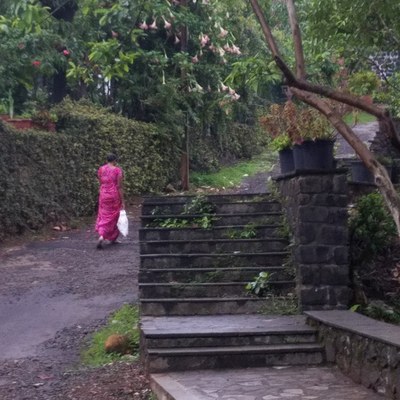

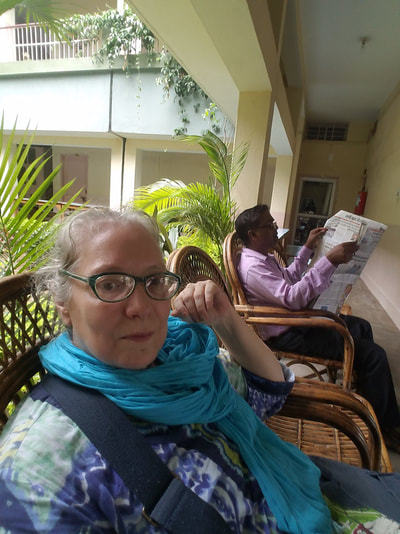


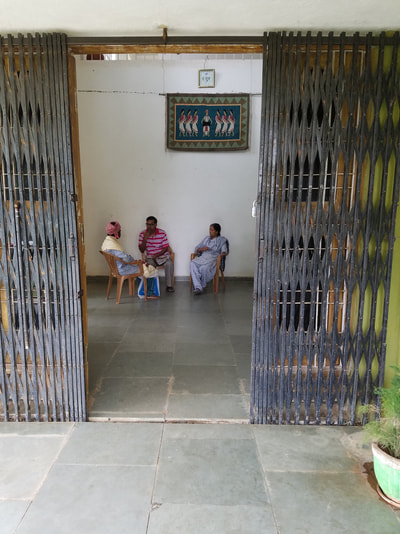









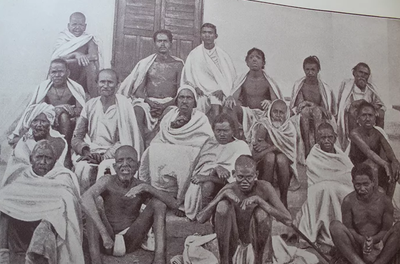









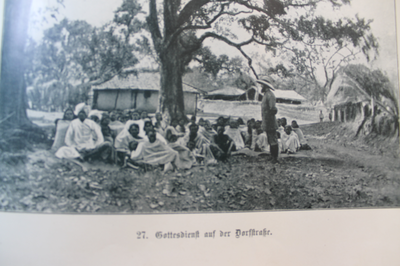



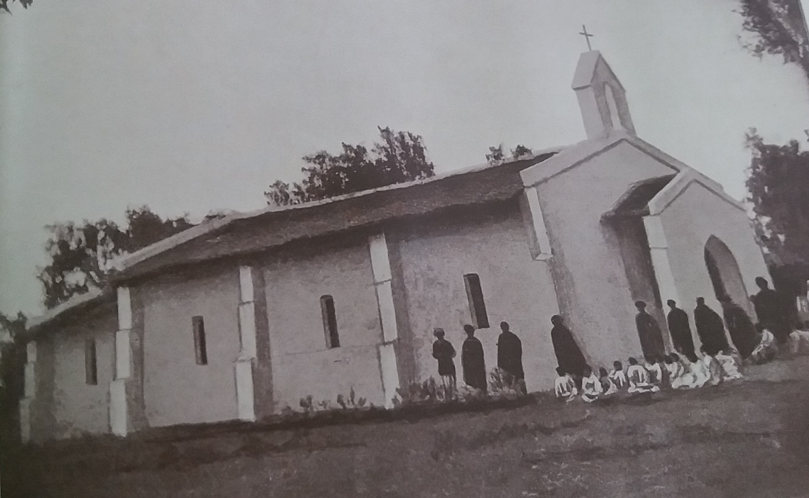

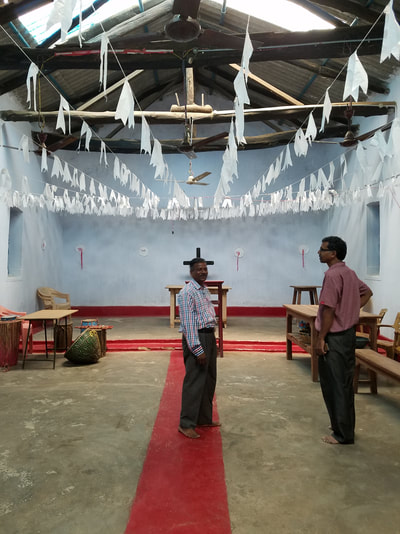




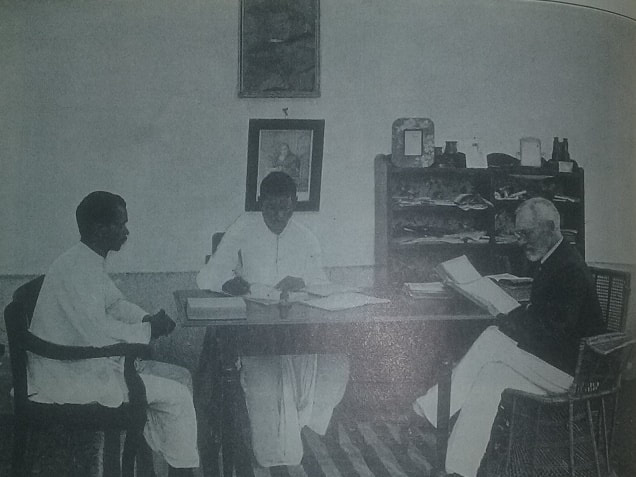



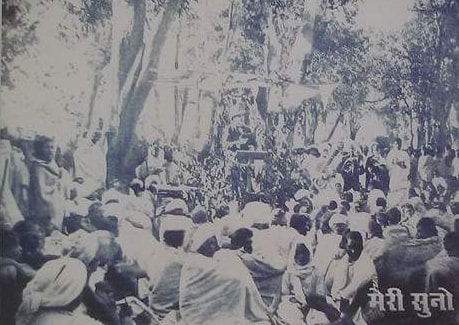











 RSS Feed
RSS Feed